Tecniche di manipolazione e contenzione dei roditori
Panoramica
Fonte: Kay Stewart, RVT, RLATG, CMAR; Valerie A. Schroeder, RVT, RLATG. Università di Notre Dame, IN
È stato dimostrato che anche una minima manipolazione di topi e ratti è stressante per gli animali. La manipolazione per il cambio di gabbia e altre procedure non invasive provoca un aumento della frequenza cardiaca, della pressione sanguigna e di altri parametri fisiologici, come i livelli sierici di corticosterone. Le fluttuazioni possono continuare fino a diverse ore. I metodi di contenzione richiesti per le iniezioni e i prelievi di sangue causano anche cambiamenti fisiologici che possono potenzialmente influenzare i dati scientifici. La formazione nella corretta gestione di topi e ratti è necessaria per ridurre al minimo gli effetti sugli animali. 1 Topi e ratti possono essere trattenuti manualmente con dispositivi di ritenuta o con agenti chimici. I metodi manuali e l'uso di dispositivi di ritenuta sono trattati in questo manoscritto. Tutti i metodi di contenimento includono il processo di sollevamento degli animali dalla loro gabbia domestica.
Principi
I metodi comuni per rimuovere un topo o un topo dalla sua gabbia comportano il sollevamento dell'animale per la coda, l'uso di una pinza per afferrare la collottola del collo o della base della coda, l'uso di un tubo o di un altro dispositivo di arricchimento,2 afferrando intorno al corpo o raccogliendo l'animale nel palmo. 3,4
Quando si solleva un topo o un topo per la coda, è imperativo che la coda sia afferrata alla base vicino alla groppa dell'animale. Se l'animale viene sollevato dall'estremità della coda, la pelle della coda può deglove ed essere tirata fuori dallo stress del peso corporeo; una lesione da degloving comporterà l'amputazione della coda. 3 Lo spostamento di un animale da una gabbia all'altra o su una superficie di lavoro deve essere effettuato in modo rapido e costante. Sospendere l'animale nell'aria per un certo periodo di tempo non solo causerà angoscia, ma può anche causare l'animale a torcersi o lottare, con possibili danni alla coda. Il conduttore non dovrebbe mettere la mano sotto l'animale perché, poiché viene sollevato dalla coda, è istintivo che l'animale cerchi di afferrare la mano per sicurezza, provocando un morso.
In molti impianti di produzione di topi, le pinna vengono utilizzate per rimuovere gli animali dalle loro gabbie. Questo viene fatto per la biosicurezza, in quanto si ritiene che vi siano meno possibilità di contaminazione incrociata da animale ad animale. Le punte della pinca devono essere conservate in alcool tra la manipolazione di singoli animali o gruppi di animali. Ci sono una varietà di pinde usate per afferrare i topi. I più comunemente usati includono pinci di medicazione lunga con punte atraumatiche o con tubi di gomma, plastica o silicone posizionati sopra le estremità della pinica per fornire una pinica a cuscino o a linguetta con impugnature in gomma. 4
La pinna può afferrare un topo sia alla collottola che alla base della coda. La maggior parte dei topi si abitua rapidamente a questo metodo e non lotta. Tuttavia, la pazienza e la pratica sono necessarie per diventare abili nel catturare gli animali. I principianti dovranno essere addestrati su come afferrare strettamente i topi, specialmente alla collottola, in quanto ciò potrebbe interferire con la respirazione. Quando si utilizza una pinna sulla coda, è necessario prestare attenzione a posizionare la pinna vicino alla base della coda per evitare lesioni.
Per gli animali che sono ansiosi o mostrano stereotipi, posizionare i tubi nella gabbia può ridurre la difficoltà di manipolazione e ridurre la risposta di volo / paura alla zootecnia quotidiana. Un tubo fatto di un materiale non poroso può essere aggiunto per l'arricchimento e servire come luogo in cui l'animale può ripararsi o cercare un rifugio sicuro. Tali tubi possono essere aperti o chiusi su un'estremità. La maggior parte dei topi o dei ratti andrà volentieri nei tubi quando la loro gabbia viene aperta, oppure possono essere facilmente guidati al tubo. Una volta che l'animale è all'interno del tubo, l'estremità aperta viene coperta per trasportare l'animale nella nuova posizione. Se posto in una gabbia fresca, il tubo può essere delicatamente inclinato verso l'alto per incoraggiare gli animali a lasciarlo. Gli animali sono facilmente condizionati a questo metodo di cambio gabbia e entreranno immediatamente nei tubi, rendendo questo metodo facile e veloce come altri per spostare gli animali da un luogo all'altro. Sebbene i tubi non debbano essere presenti nella gabbia domestica per essere efficaci, avere un tubo nell'involucro primario aumenta il riconoscimento di un sito sicuro familiare, oltre a garantire l'arricchimento della gabbia. 2
Alcune istituzioni preferiscono che gli animali siano sollevati dall'organismo per la manipolazione di routine, in particolare per la manipolazione dei ratti. Gli animali devono essere abituati a questo metodo fin dalla tenera età. I giovani ratti tra le 2-4 settimane di età tendono a saltare dritto verso l'alto. Mettere una mano sulla schiena del topo lo farà saltare nel palmo del conduttore, permettendogli di essere afferrato. Potrebbe essere necessaria una seconda mano per evitare che il ratto si schizzi fuori dalla presa prima di metterlo in un'altra gabbia. I ratti adulti vengono delicatamente afferrati attorno al torace, sollevati e rapidamente collocati in un'altra gabbia o su una superficie.
Quando si cambiano le gabbie con topi o ratti neonati, è spesso necessario rimuoverli mantenendo intatto il nido. Con l'uso di due mani per raccogliere il nido e i neonati dal fondo della gabbia, il nido intatto viene spostato in una nuova gabbia. Tuttavia, per evitare di far cadere i cuccioli, le dita di ogni mano devono essere tenute strettamente unite. Una volta spostati in una nuova gabbia, è importante verificare che i cuccioli siano tutti presenti. Si consiglia di contare i cuccioli prima e dopo averli spostati. Un misurino di plastica può essere usato al posto delle mani. Se si utilizza questo metodo, una mano deve essere posizionata sopra la parte superiore del misurino per evitare che i neonati si ingovano o saltassero fuori dallo scoop. Questo metodo di trasferimento dei cuccioli, rispetto alla gestione individuale dei cuccioli, è meno angosciante sia per i cuccioli che per le dighe.
La moderazione per le procedure tecniche richiede un tocco sicuro e fermo, ma delicato. Approcci provvisori possono portare a morsi del gestore. Se il conduttore rincula mentre un animale strilla, quell'animale impara rapidamente come evitare la moderazione. Tuttavia, la manipolazione aggressiva può causare lesioni o morte di roditori. Un equilibrio di un approccio assertivo ma gentile è l'obiettivo per la gestione dei roditori.
Topi e piccoli ratti possono essere trattenuti afferrando la pelle alla nuca, indicata come scruffing. Le precauzioni per questo metodo includono sia afferrare la pelle troppo saldamente o troppo liberamente. Se la pelle viene afferrata troppo strettamente, le vie aeree possono restringersi, il che può portare alla morte. Se afferrato troppo liberamente, l'animale sarà in grado di girare la testa e potenzialmente mordere il conduttore.
Gli animali che sono agitati o estremamente paurosi hanno molte più probabilità di mordere. È meglio calmare l'animale prima della manipolazione. Ci sono varie tecniche calmanti che sono state provate con successo variabile. Il metodo più affidabile è quello di utilizzare una sorta di restrizione chimica, il più delle volte un anestetico per inalazione. L'isoflurano o sevoflurano sono anestetici per inalazione a breve durata d'azione che possono essere somministrati con la sola manipolazione necessaria per trasferire l'animale dalla sua gabbia a una camera di induzione. Una volta che l'animale è anestetizzato, può essere manipolato o trattenuto manualmente per la procedura.
Un metodo per calmare un topo è avvolgerlo in un asciugamano di spugna spesso, permettendogli di nascondersi sotto l'asciugamano. Posizionarlo su una manica del cappotto da laboratorio in modo che possano seppellire la testa nelle pieghe del gomito può anche fornire un senso di sicurezza sicura all'animale. Questo stesso risultato può essere ottenuto posizionando l'animale in una zona buia per alcuni minuti.
Procedura
1. Scruffing
I topi sono più spesso trattenuti usando la tecnica di scruffing, ma anche i giovani ratti possono essere trattenuti con questo metodo. I ratti adulti sono più difficili da trattenere con questa tecnica a causa di un collo più muscoloso, una ridotta quantità di pelle sciolta e un'avversione a questo metodo.
- Il metodo di ritenuta con una sola mano viene utilizzato più spesso in ceppi di topo molto calmi, come il nudo atimico, lo SCID e alcuni ceppi GEM. Tuttavia, c'è un rischio maggiore di essere morsi con questo metodo. I gestori di animali alle prime armi dovrebbero familiarizzare con la tecnica di ritenuta a due mani prima di tentare il metodo con una sola mano.
- Posiziona l'animale su una superficie che può afferrare, come una parte superiore della gabbia della barra metallica o un tappetino.
- Tenere la coda tra il terzo e il quarto dito della mano non dominante e applicare una leggera trazione all'indietro. Ciò fa sì che l'animale si aggrappi alla superficie e si traduca in un corpo allungato e allungato.
- Gira la mano in modo che il palmo sia rivolto verso il corpo dell'animale.
- Con l'indice e il pollice, appuntare il roditore sulle spalle.
- Far scorrere delicatamente il pollice e l'indice in avanti e posizionarli alla base del cranio. Afferra la pelle sciolta al collo e solleva l'animale.
- Usa il dito medio per stabilizzare l'animale lungo la schiena bloccando la pelle dorsale contro la base del pollice.
- Contenimento a due mani
- Posiziona l'animale su una superficie che possa afferrare.
- Tenere la coda alla base (entro 1-2 cm dal corpo) con la mano dominante e applicare una leggera trazione all'indietro. Ciò fa sì che l'animale si aggrappi alla superficie e si traduca in un corpo allungato e allungato.
- Con l'indice e il pollice dell'altra mano, appuntare il roditore sulle spalle.
- Far scorrere delicatamente il pollice e l'indice in avanti e posizionarli alla base del cranio. Afferra la pelle sciolta al collo e solleva l'animale.
- Usa le dita rimanenti per stabilizzare l'animale lungo la schiena bloccando la pelle dorsale contro la base del pollice.
- Fissare i quarti posteriori bloccando la coda contro il palmo con il quarto dito o lasciando riposare gli arti posteriori su una superficie solida.
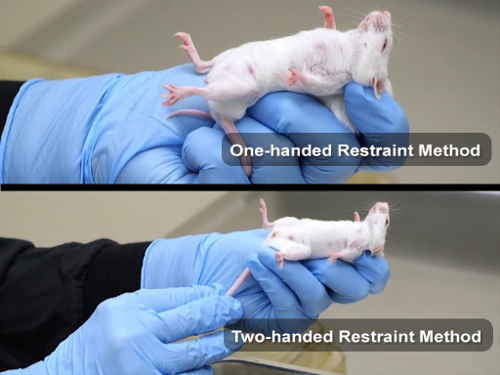
Figura 1: Metodo di ritenuta con una e due mani per i topi
2. Guanti
Ci sono una varietà di guanti disponibili per i gestori da indossare per la protezione dai morsi di ratto. Sono generalmente inadatti al lavoro con i topi a causa della perdita di destrezza. Spesso, gli svantaggi di molti tipi di guanti superano i vantaggi.
- I guanti da lavoro in tela di cotone non sono resistenti ai morsi, ma forniscono una piccola quantità di protezione da denti e unghie. Non forniscono una buona presa in quanto scivolano facilmente sulla pelliccia.
- I guanti in pelle di buona qualità sono resistenti ai morsi. Tuttavia, la loro rigidità provoca una riduzione della destrezza. Lo spessore della pelle, sebbene protettivo, riduce l'acuità tattile e la mobilità della mano.
- I guanti per posta a catena forniscono un senso psicologico di sicurezza per il conduttore di animali. Tuttavia, sono pesanti e la maggior parte dei denti dei ratti può penetrare tra i collegamenti. Inoltre, questi guanti diminuiscono la destrezza manuale e, se usati in modo improprio, sono più pericolosi sia per l'animale che per il conduttore.
- I guanti isolati in gomma che sono comunemente usati nelle case per lavare i piatti forniscono una superficie palmare strutturata e consentono una presa sicura sul pelo dei roditori. La superficie elastica in lattice è abbastanza spessa da resistere alla puntura degli incisivi dei roditori e abbastanza sottile da essere in grado di sentire e controllare l'animale. Il principale svantaggio è che sono fatti di lattice, che è una preoccupazione per le persone con allergie al lattice. Inoltre, questi guanti si deteriorano alla luce e devono essere sostituiti regolarmente.
3. Contenimento del corpo
- La "presa T. rex" è un metodo di ritenuta a due mani per ratti.
- Posiziona un topo su una superficie che può essere afferrata.
- Tenendo la base della coda con una mano, porta l'altra mano su e sopra la schiena con l'indice e il medio divisi.
- Posiziona la mano sulla spalla con l'indice su un lato della testa e il dito medio sull'altro lato. Le dita su ciascun lato della testa limitano il movimento da un lato all'altro della testa.
- Circonda il corpo dietro le zampe anteriori con il terzo dito, il quarto dito e il pollice. Bisogna fare attenzione per evitare di comprimere il torace e compromettere le respirazioni. Questa presa impedisce al topo di muoversi avanti o indietro fuori dalla mano.
- Stabilizzare la coda e i quarti posteriori afferrando la base della coda con o senza aggrapparsi ai piedi posteriori.
- Questa restrizione funziona bene con ratti più grandi e quando è necessario l'accesso alla testa.
- Il metodo incrociato dell'archo anteriore è un metodo di ritenuta a due mani.
- Posiziona l'animale su una superficie che possa afferrare.
- Tenere la coda alla base (entro 1-2 cm dal corpo) con la mano dominante e applicare una leggera trazione all'indietro. Ciò fa sì che l'animale si aggrappi alla superficie e si traduca in un corpo allungato e allungato.
- Porta l'altra mano da dietro sopra la schiena.
- Afferrare il topo direttamente dietro le spalle, con le dita su un lato e il pollice sull'altro lato del torace, e far scorrere la mano in avanti, forzando così le zampe anteriori in avanti.
- Le zampe anteriori si attraverseranno sotto il mento del topo, creando una barriera fisica e impedendo al ratto di muovere la testa verso il basso verso le dita.
- Fare attenzione ad evitare di comprimere il torace e compromettere le respirazioni.
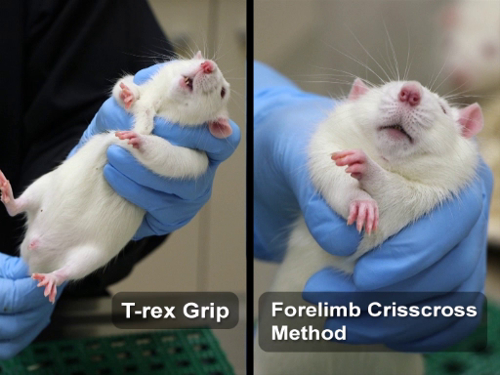
Figura 2: Presa T-rex e metodo incrociato degli arch per trattenere i ratti
4. Dispositivi di ritenuta
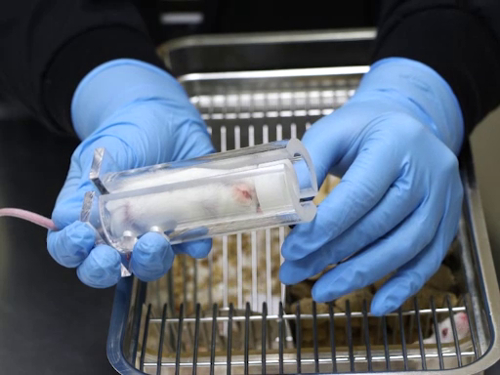
Figura 3: Dispositivo di ritenuta in stile Broome
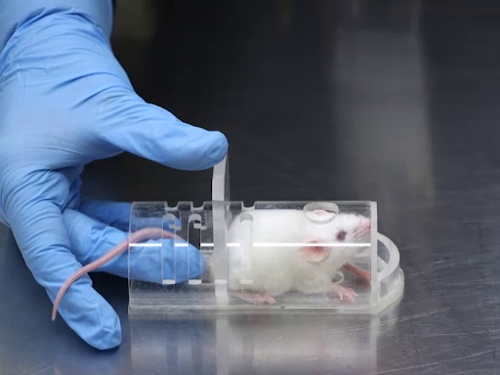
Figura 4: Restrainer per roditori a fondo piatto
- I dispositivi rigidi sono disponibili in una varietà di tipi e sono generalmente realizzati in materiale non poroso che è facilmente disinfettato.
- Il sistema di ritenuta in stile Broome è progettato per fornire l'accesso alla coda per iniezioni endovenose. È costruito con una fessura che corre lungo l'intera lunghezza del dispositivo, che consente all'animale di essere tirato prima nei quarti posteriori del freno. Un nasello di plastica viene inserito per tenere l'animale in posizione.
- Rimuovere il nasello dal corpo del tubo di ritenuta allentando la vite.
- Afferrare l'animale alla base della coda e orientare il tubo di ritenuta in modo che la fessura che corre per tutta la lunghezza del tubo sia rivolta verso l'alto. Tirare delicatamente l'animale nei quarti posteriori del dispositivo di ritenuta prima.
- Spesso è vantaggioso posizionare l'animale su una superficie liscia per facilitarne il posizionamento nel tubo.
- Una volta che l'animale è completamente nel tubo - ed è stato attirato verso l'estremità chiusa - far scorrere il nasello di plastica nel tubo per occludere l'apertura.
- Posizionare il gruppo nasello in modo che il naso dell'animale si trova nell'apertura centrale. Non posizionare il nasello così strettamente che l'animale non possa respirare.
- Il dispositivo di ritenuta per roditori a fondo piatto è un mezzo cilindro con aperture che consentono l'accesso dall'alto e dal basso del dispositivo di ritenuta. Un cancello di plastica rigida viene inserito in uno dei numerosi slot graduati per contenere l'animale all'interno del dispositivo.
- Tieni l'animale per la base della coda con la mano dominante su una superficie liscia o sulla parte superiore di una gabbia.
- Tenere il tubo di ritenuta a fondo piatto nell'altra mano e inclinarlo in modo che l'estremità aperta sia alla testa dell'animale con un angolo di 45 ° rispetto alla superficie superiore del tavolo / gabbia.
- Alcuni animali entreranno immediatamente nel tubo, mentre altri sono riluttanti e richiedono al conduttore di guidarli nel tubo.
- Posiziona il tubo sopra la testa dell'animale. Toccare immediatamente la groppa dell'animale e mantenere la pressione per impedire all'animale di eseguire il backup.
- Una volta che l'animale è nel dispositivo di ritenuta, far scorrere il cancello di plastica nella fessura appropriata per tenere l'animale nel dispositivo di ritenuta.
- I sistemi di ritenuta per tubi sono cilindri in plexiglass con un'estremità chiusa contenente fori o fessure per la circolazione dell'aria. Alcuni sono modificati con un'ampia fessura della metà della lunghezza del cilindro per accogliere l'esposizione di un arto posteriore per iniezioni intramuscolari, raccolta di sangue safeno e femorale o accesso alla superficie dorsale per iniezioni sottocutanee.
- Afferra l'animale per la base della coda con la mano dominante su una superficie liscia o sulla parte superiore di una gabbia.
- Tenere il tubo di ritenuta nell'altra mano e angolarlo in modo che l'estremità aperta sia alla testa dell'animale con un angolo di 45 ° rispetto alla superficie superiore del tavolo / gabbia.
- Alcuni animali entreranno immediatamente nel tubo. Altri animali sono riluttanti e richiedono al conduttore di guidarli nel tubo.
- Posiziona il tubo sopra la testa dell'animale. Toccare immediatamente la groppa dell'animale e mantenere la pressione per impedire all'animale di eseguire il backup.
- Scruff e guida manualmente gli animali ingestibili nel tubo, consentendo alla pelle trattenuta di scivolare attraverso la fessura nel tubo.
- Una volta che l'animale si trova nel dispositivo di ritenuta, è necessario occludere l'apertura per impedire all'animale di eseguire il backup.
- A seconda della procedura, diverse dita sono posizionate attraverso l'apertura.
- Infila un grande guanto di lattice nell'apertura. I guanti sono solitamente strutturati e afferrano la superficie in plexiglass.
- Alcuni tubi di ritenuta avranno chiusure specifiche per quello stile o dimensione.
- Il sistema di ritenuta in stile Broome è progettato per fornire l'accesso alla coda per iniezioni endovenose. È costruito con una fessura che corre lungo l'intera lunghezza del dispositivo, che consente all'animale di essere tirato prima nei quarti posteriori del freno. Un nasello di plastica viene inserito per tenere l'animale in posizione.
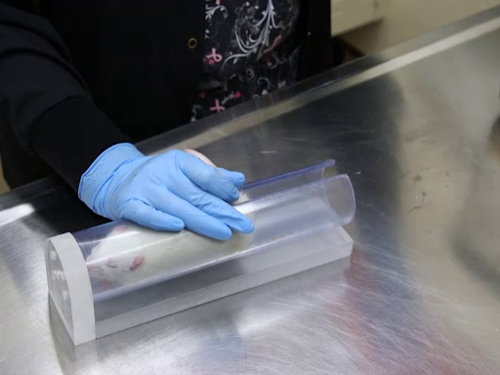
Figura 5: Dispositivo di ritenuta del tubo
- I dispositivi di ritenuta flessibili sono coni di plastica flessibili usa e getta. Sono disponibili in plastica trasparente o opaca. La plastica è abbastanza sottile da consentire la penetrazione da parte di un ago per eseguire iniezioni senza rimuovere l'animale dal dispositivo di ritenuta. Sono disponibili in una varietà di dimensioni per adattarsi a topi e ratti, sia adulti che svezzati.
- Tagliare la plastica con le forbici per consentire l'accesso agli arti, alla coda e ad altri siti di iniezione.
- Selezionare una dimensione del cono appropriata per l'animale. Il cono dovrebbe essere abbastanza lungo da estendersi di 2-3 pollici oltre la groppa dell'animale.
- Inserire l'animale nel cono
- Apri il cono e afferralo intorno alla metà superiore.
- Afferrare l'animale per la base della coda con la mano dominante, posizionandolo su una superficie liscia o su una parte superiore della gabbia.
- Tenere il cono di ritenuta nell'altra mano e inclinarlo in modo che l'estremità aperta sia alla testa dell'animale con un angolo di 45 ° rispetto alla superficie superiore del tavolo / gabbia.
- Alcuni animali entreranno immediatamente nel cono. Altri animali sono riluttanti e richiedono al conduttore di guidarli nel cono di cono di contenzione.
- Posiziona il cono sopra la testa dell'animale. Toccare immediatamente la groppa dell'animale e mantenere la pressione per impedire all'animale di eseguire il backup. A causa del diametro maggiore dell'apertura del cono, gli animali hanno molte più probabilità di girarsi per uscire dal cono.
- Non appena l'animale entra nel cono, afferrare l'estremità aperta e sigillarla per costringere l'animale alla fine.
- Fissare l'apertura piegando la plastica su un lato della coda e applicando la clip legante alla plastica piegata, facendo attenzione a evitare di bloccare la coda o la pelle. In alternativa, raccogliere la plastica intorno alla coda in modo uniforme e posizionare la cravatta a torsione il più vicino possibile al corpo per fissare l'apertura.
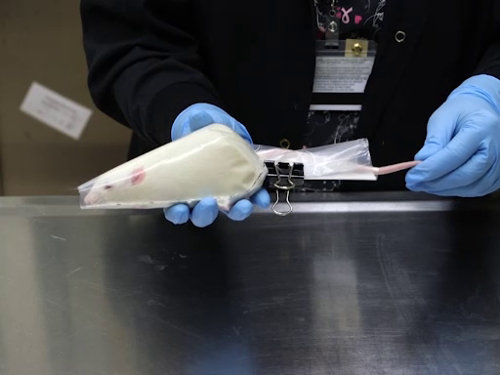
Figura 6: Restrainer flessibile
5. Metodi di contenimento per procedure tecniche specifiche
- L'esposizione ventrale è necessaria per le iniezioni intraperitoneali.
- Scruffing
- Scruff l'animale e gira la mano in modo che l'addome sia esposto.
- Inclinare l'animale in modo che la testa sia rivolta verso il basso con un angolo di 30°.
- Fissare i quarti posteriori bloccando la coda contro il palmo usando il quarto dito.
- In alternativa, i quarti posteriori possono essere immobilizzati bloccando la pelle in eccesso lungo la schiena tra le dita e la base del pollice.
- Metodi di ritenuta incrociati dell'impugnatura del T. rex e dell'archlombo anteriore
- Afferrare l'animale (solo ratti) usando una delle tecniche di cui sopra.
- Con la mano libera, afferrare entrambe le zampe posteriori sopra il garretto ed estenderle caudale.
- Sostieni il peso dell'animale con il palmo della mano sul retro.
- Inclinare l'animale in modo che la testa sia rivolta verso il basso con un angolo di 30°.
- Una seconda persona esegue l'iniezione.
- Trattene rigida
- La maggior parte dei dispositivi di ritenuta rigidi non può impedire all'animale di rotolare istintivamente per rimanere in posizione verticale.
- Se viene utilizzato un limitatore rigido, ruotare l'animale in modo che la testa sia rivolta verso il basso e sia perpendicolare al piano del tavolo.
- Restrainer flessibile
- Se posizionato correttamente in un cono di plastica flessibile, l'animale non è in grado di girarsi o girarsi.
- Bisogna fare attenzione a posizionare l'animale in modo che gli arti posteriori siano sufficientemente separati da consentire l'accesso all'addome.
- Poiché l'animale è compresso, è imperativo che l'iniezione sia abbastanza bassa sulla superficie ventrale per evitare la puntura della milza, del fegato, del rene o dello stomaco.
- Scruffing
- L'esposizione dorsale è necessaria per le iniezioni nello spazio sottocutaneo.
- Scruffing
- Scruff l'animale e lascia che le sue zampe posteriori riposino su una superficie solida e piana.
- Sollevare la collottola per creare una tenda di pelle sopra il collo e le spalle.
- Posizionare il peso della mano sul tavolo quando si iniettano i topi. Mettere peso sul mouse può causare soffocamento.
- Tenere i ratti in posizione con peso sui quarti posteriori, ma mai sul petto.
- Iniettare la sostanza nello spazio sotto le dita sul corpo dell'animale.
- Immobili rigidi
- Metti l'animale in un dispositivo di ritenuta con un'apertura abbastanza grande da tirare su la pelle.
- Potrebbe essere necessario utilizzare una pince per afferrare la pelle.
- La maggior parte degli animali rimane nella postura corretta a meno che la restrizione non sia ruotata.
- Non iniettare un volume che impedisca alla pelle di ritirarsi dall'apertura una volta completata l'iniezione.
- Scruffing
- La moderazione dell'arto posteriore è necessaria per l'iniezione intramuscolare; prelievo di sangue dalla vena safena, dalla vena femorale o dall'arteria femorale; e iniezione nella pedana.
- Scruffing di topi e piccoli ratti (meno di 200 g)
- Scruff l'animale e gira la mano in modo che l'addome sia esposto.
- Accedere al piede posteriore posizionando il piede tra le dita.
- Questo metodo è meglio utilizzato solo per le iniezioni di footpad.
- Impugnatura T. rex o incrocio dell'archo anteriore
- Questo metodo richiede due persone: una per il contenimento del corpo e una per il contenimento dell'arto e l'esecuzione dell'iniezione.
- Estendere la zampa posteriore del ratto afferrando il piede per l'accesso alla vena safena, alla vena femorale o all'arteria o al muscolo per iniezione.
- Tenere la gamba appena sopra il garretto per l'iniezione della pedana.
- Immobili rigidi
- Metti prima l'animale in una testa del tubo di ritenuta.
- Esporre la coda e i quarti posteriori tirandoli delicatamente all'indietro dal tubo.
- Immobilizzare la gamba afferrando la pelle del fianco e bloccando il ginocchio dritto. Ciò fornisce l'accesso al muscolo quadricipite per l'iniezione nel topo o nel ratto e impedisce all'animale di uscire dal dispositivo di ritenuta.
- Nei dispositivi con grandi fessure, posizionare la gamba all'esterno del tubo per l'accesso ai vasi sanguigni per il campionamento o l'iniezione della pedana.
- Quei tubi di ritenuta con estremità piatte consentono al tubo di appoggiarsi sul tavolo e stabilizzare il dispositivo durante la procedura.
- Poiché l'animale è fissato in questo modo, è possibile eseguire iniezioni o prelievi di sangue di ratti da un singolo tecnico.
- Contenimento flessibile
- I sistemi di ritenuta in plastica flessibili possono essere modificati tagliando le aperture per adattarsi all'esposizione degli arti.
- Le aperture realizzate possono essere personalizzate per ogni animale, o per procedure specifiche.
- Poiché l'animale è fissato in questo modo, è possibile per un singolo tecnico eseguire iniezioni o prelievi di sangue di ratti.
- Scruffing di topi e piccoli ratti (meno di 200 g)
Applicazione e Riepilogo
La manipolazione di routine per il cambio delle gabbie e le procedure tecniche sono causa di stress per gli animali da esperimento. Sebbene questo tipo di stress non sia una minaccia per il benessere generale dell'animale, può causare fluttuazioni nei parametri fisiologici che possono avere un effetto negativo sui dati della ricerca. L'uso di personale qualificato, tecniche e attrezzature adeguate può mitigare parte dello stress.
Vai a...
Video da questa raccolta:

Now Playing
Tecniche di manipolazione e contenzione dei roditori
Lab Animal Research
175.9K Visualizzazioni

Procedure di assistenza di base
Lab Animal Research
28.1K Visualizzazioni

Fondamenti di allevamento e svezzamento
Lab Animal Research
35.9K Visualizzazioni

Identificazione dei roditori I
Lab Animal Research
55.1K Visualizzazioni

Identificazione dei roditori II
Lab Animal Research
25.7K Visualizzazioni

Amministrazione composta I
Lab Animal Research
101.3K Visualizzazioni

Amministrazione composta II
Lab Animal Research
35.2K Visualizzazioni

Amministrazione composta III
Lab Animal Research
31.7K Visualizzazioni

Somministrazione composta IV
Lab Animal Research
52.1K Visualizzazioni

Prelievo di sangue I
Lab Animal Research
172.8K Visualizzazioni

Astinenza di sangue II
Lab Animal Research
74.0K Visualizzazioni

Induzione e manutenzione dell'anestesia
Lab Animal Research
51.1K Visualizzazioni

Considerazioni per la chirurgia dei roditori
Lab Animal Research
22.6K Visualizzazioni

Necroscopia diagnostica e prelievo di tessuti
Lab Animal Research
58.5K Visualizzazioni

Raccolta di tessuti sterili
Lab Animal Research
35.0K Visualizzazioni